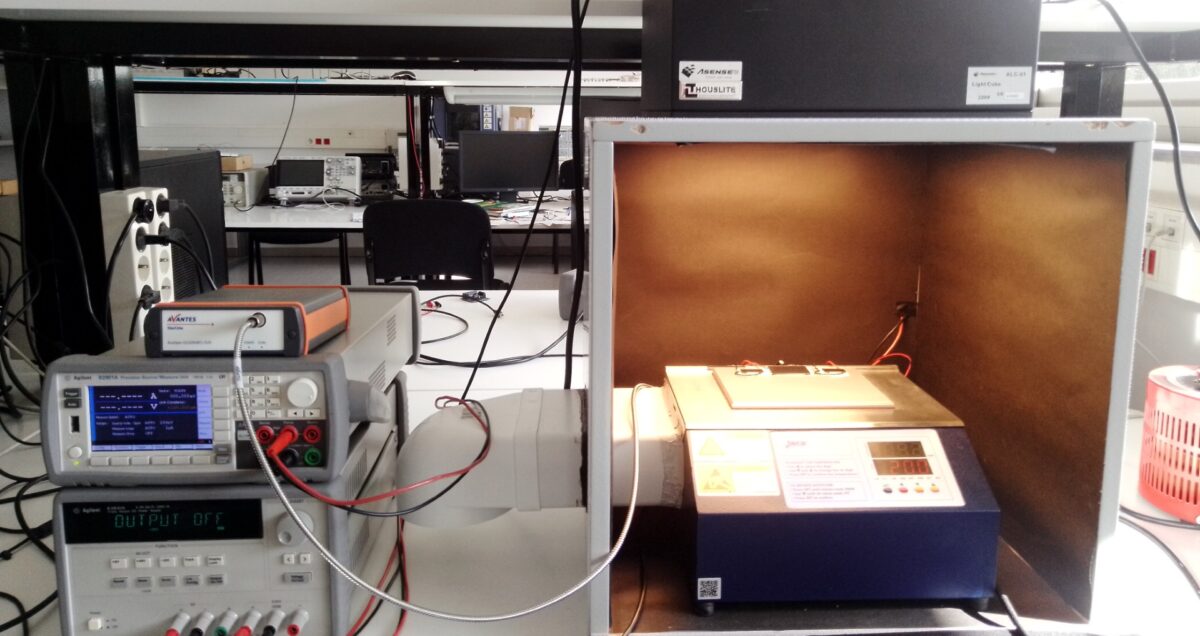
Researchers at the Universitat Politècnica de Catalunya in Spain evaluated 12 PV devices from 11 suppliers for indoor use, identifying several systems capable of powering remote sensor nodes with a 10 cm² surface area and advancing to testing under natural indoor light.
Researchers at the Universitat Politecnica de Catalunya in Spain evaluated a dozen indoor PV modules from eleven suppliers with the goal of identifying a PV-based power supply for remote sensor nodes that have 10 cm2 available surface area.
The modules, some of which were prototypes, were based on perovskite, monocrystalline and polycrystalline silicon, amorphous silicon, organic PV (OPV) and III-V technologies.
“The effort was motivated by two projects that required autonomous sensors” that would use free optical energy coming from natural daylight and artificial lighting available indoors,” the research’s corresponding author, Ferran Reverter, told pv magazine.
The group chose an indoor PV-powered device for this type of application due to its wireless nature and potential for long lifetimes, overcoming the limitations of primary batteries that need to be changed or grid-connected designs requiring cabling.
They also noted that being able to do a “fair and direct comparison” of indoor PV module suppliers’ products using the corresponding datasheets is “unfeasible” because the testing conditions were defined by each manufacturer.
A custom automatic testing system was developed to characterize the PV modules under indoor artificial lighting in the range of 100 lx to 1000 lx. The reference conditions were 1000 lx and 25 C operating and maximum operating point (MPP). Testing was done under four different indoor artificial lighting types for a total of 48 different module/light pairs.
The compact fluorescent (CFL) and halogen-type incandescent (HAL) light was provided by commercial lamps controlled by a variable transformer, while the cold LED (C-LED) and warm LED (W-LED) relied on a spectrally tunable light source, Asensetek Light Cube.
The modules were sourced from the likes of AnySolar, AMX Solar, Panasonic, PowerFilm, Dracula Technologies and several other manufacturers, including three perovskite solar modules, chosen “because this is the novel, low-cost technology suggested for future indoor applications,” according to the researchers.
The module/light pairs were evaluated for power density, efficiency, fill factor, and linearity to find the optimal pairs for indoor applications.
“The best numbers are provided by PV modules that belong to the III-V group. However, considering the high cost of this technology, the most attractive PV technologies for indoor applications seem to be the organic and perovskite,” Reverter said. “Although the power at the output of the PV cells in indoor applications is much lower than outdoors, the results are promising to power autonomous sensors.”
Indeed, based on their experimental results, the team said that the monocrystalline and polycrystalline silicon modules were most appropriate for HAL light, with an efficiency of “up to 20% at 1000 lx.” For the C-LED, W-LED, and CFL lights, the most suitable module was the one belonging to the III-V group, with an efficiency of up to 39% at 1000 lx.
“However, considering the high cost of such a technology, an alternative solution for C-LED, W-LED, and CFL are the organic and perovskite modules, whose efficiency can be up to 14% and 22%, respectively, at 1000 lx,” said the scientists, adding that adoption would depend on being able to access commercially available PV modules.
The research is described in detail in “Low-area PV cells under indoor artificial lighting: a comparative study,” published in IEEE transactions on instrumentation and measurement.
The group is now conducting a similar study but under indoor natural daylight conditions rather than artificial lighting. “Then, the next step is the design of low-power power management circuits in charge of tracking the maximum operating point (MPPT) of the PV modules,” said Reverter.
This content is protected by copyright and may not be reused. If you want to cooperate with us and would like to reuse some of our content, please contact: editors@pv-magazine.com.
Source link


